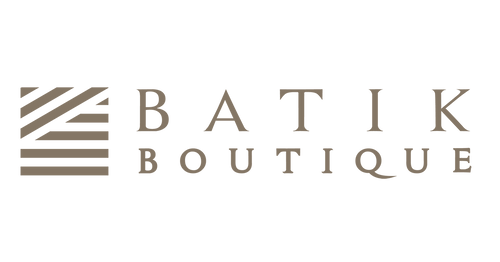The Art and Challenges of Producing Authentic Malaysian Batik

Introduction

Malaysian batik is a beautiful and intricate art form, celebrated for its vibrant colors and unique patterns. Each piece is hand-crafted, representing a rich cultural heritage that dates back centuries. At Batik Boutique, we take pride in preserving this traditional craft while ensuring high-quality standards in every product. However, the journey from raw fabric to finished batik can sometimes encounter challenges. This blog explores what happens when batik fabric production goes wrong and how we maintain our commitment to quality and sustainability.
What Happens When Batik Fabric Production Goes Wrong?
Understanding the Importance of Quality in Batik Production
In batik production, every detail matters—from the precision of the wax lines to the vibrancy of the dyes. Any deviation from the intended design or color can be considered a defect. These defects can range from minor imperfections to major issues that affect the fabric's overall usability. Ensuring that each piece meets our high standards is essential to maintaining the beauty and integrity of Malaysian batik.
Quality control is an integral part of our batik production process. Each piece of fabric undergoes a thorough inspection at various stages of production. Here’s a brief overview of our quality control process:
-
Initial Inspection: The raw fabric is checked for any pre-existing flaws before the batik process begins. This step ensures that we start with the best possible material.

-
Wax Application Check: Ensuring the wax lines are applied accurately and consistently is crucial for creating the intricate designs that batik is known for.

-
Dyeing Quality: Verifying the color vibrancy and uniformity after dyeing ensures that the fabric meets our aesthetic standards.

-
Final Inspection: A comprehensive check for any remaining defects before the fabric is sent for cutting and sewing guarantees that only the highest quality products reach our customers.

Creating handmade batik is not only about maintaining quality but also about supporting and preserving cultural heritage. The process is labor-intensive and requires exceptional skill, patience, and attention to detail. At Batik Boutique, we face several challenges in this intricate craft, including:
- Inconsistency in Following Instructions: Handmade batik relies heavily on the artisan's precision. Variations in wax application or dyeing can lead to defects.
- Issues with Color Accuracy: Ensuring the correct shades of color is crucial. Any discrepancy can render the fabric unusable for its intended purpose.
- High Material Costs: Quality materials are essential for producing high-standard batik, but they can be expensive.
Despite these challenges, the rewards are immense. By producing handmade batik, we support marginalized communities in Malaysia, providing them with sustainable livelihoods. Batik Boutique is proud to be B Corp certified and a highly accredited social enterprise, recognized for our commitment to social and environmental performance, accountability, and transparency.
Handmade batik is not perfect, and that's what makes it special. Each piece carries minor imperfections that add to its authenticity and charm. These imperfections are a testament to the human touch involved in every step of the process, making each batik product unique and distinctive.
Managing Fabric Defects: A Sustainable Approach
At Batik Boutique, we believe in minimizing waste and promoting sustainability. Here’s how we manage fabric defects:



Check out more of our upcycled batik accessories and gifts here:
By doing so, we ensure that even the imperfect pieces of batik fabric find a purpose and contribute to our product range. This approach not only reduces waste but also offers our customers a variety of unique, handcrafted items.

In cases where the entire fabric is affected by defects such as poor line quality or incorrect colors, we take a different approach. We add another layer of wax and re-dye the fabric, creating a new design that can be used for various products. This method not only salvages the fabric but also adds a unique touch to our offerings. It’s a creative solution that allows us to turn a potential loss into a beautiful, usable product.
Conclusion
Maintaining the quality of Malaysian batik fabric is crucial for preserving its beauty and cultural significance. At Batik Boutique, we are committed to rigorous quality control and sustainable practices. By repurposing defective fabrics, we reduce waste and create unique, eco-friendly products. Our dedication to sustainability ensures that every piece of batik fabric, even those with imperfections, is valued and utilized. This approach not only supports the environment but also honors the rich tradition of Malaysian batik.
Through our efforts, we proudly support heritage and marginalized communities, embodying the values of a B Corp certified and socially responsible enterprise. Embrace the charm of handmade batik, where every imperfection tells a story and adds to the beauty of each unique piece.
0 comments







